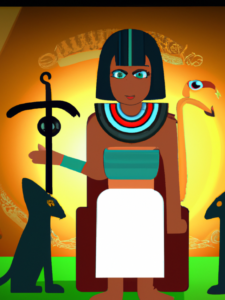Unearthing the Mysteries: 10 Amazing Facts About Ancient Indian Tribes
Introduction:
India, a land steeped in history, unfolds a mesmerizing saga of ancient tribes that have shaped its cultural tapestry over millennia. These tribes, with their unique customs, languages, and lifestyles, have left an indelible mark on the subcontinent. In this exploration, we unravel the enigmatic world of ancient Indian tribes, delving into 10 remarkable facts that illuminate the rich heritage of these ancient communities.
Timeless Existence:
The history of ancient Indian tribes spans thousands of years, predating recorded history. Archaeological evidence suggests the presence of tribes like the Bhils, Gonds, and Santhals in various regions of the subcontinent since the Neolithic and Chalcolithic periods. These tribes have not only witnessed the rise and fall of empires but have also preserved their distinct identities through the ages.
Indigenous Agricultural Practices:
Ancient Indian tribes were pioneers in developing sustainable agricultural practices that ensured their survival in diverse ecosystems. The Apatani tribe of Arunachal Pradesh, for instance, practiced terrace farming, a technique that maximizes arable land in mountainous terrain. Such innovations in agriculture underscore the tribes’ deep connection with and understanding of the land.
Epicenter of Cultural Diversity:
The ancient tribes of India were not isolated entities but vibrant contributors to the mosaic of cultural diversity. Each tribe had its language, customs, and rituals, contributing to the rich tapestry of the subcontinent. The Todas of the Nilgiri Hills, with their unique language and distinct customs, exemplify the kaleidoscope of ancient tribal cultures.
Oral Traditions and Folklore:
With no written records, ancient Indian tribes relied on oral traditions to pass down their history, myths, and cultural practices. The Gond tribe, for instance, has a rich oral tradition that includes epic narratives and songs, preserving their heritage through generations. These oral histories provide invaluable insights into the ancient tribes’ worldview and societal structures.
Artistic Expressions on Rock:
Ancient Indian tribes were skilled artists who left a lasting legacy in the form of rock art. The Bhimbetka rock shelters in Madhya Pradesh, a UNESCO World Heritage Site, showcase paintings dating back to the Mesolithic period. These artworks, created by ancient tribes, depict scenes from daily life, rituals, and the fauna of the time, offering a captivating glimpse into their world.
Nomadic Tribes and Transhumance:
Many ancient Indian tribes were nomadic or practiced transhumance, moving with their herds in search of grazing lands. The Gujjars, traditionally a pastoral community, are known for their semi-nomadic lifestyle in the Himalayan region. This mobility not only shaped their cultural practices but also fostered a deep understanding of diverse ecosystems.
Trade Networks and Interactions:
Contrary to the perception of isolation, ancient Indian tribes were active participants in trade networks. The Banjaras, a nomadic tribe, played a crucial role in the medieval trade routes, transporting goods across regions. These interactions not only facilitated economic exchanges but also led to the exchange of ideas, languages, and cultural influences.
Matrilineal Societies:
Some ancient Indian tribes embraced matrilineal social structures, challenging conventional gender norms. The Khasi and Garo tribes of Meghalaya, for example, traced their lineage through the maternal line, with women holding significant roles in family and community affairs. This unique social structure reflects the diversity in tribal societal norms across ancient India.
Spiritual Connections with Nature:
Ancient Indian tribes held profound spiritual connections with nature, often attributing divine qualities to elements such as trees, rivers, and mountains. The Dongria Kondh tribe in Odisha worshipped the Niyam Raja, the spirit of the Niyamgiri Hills. These spiritual beliefs not only shaped their rituals but also contributed to the conservation of sacred landscapes.
Challenges and Preservation Efforts:
Despite their resilience, ancient Indian tribes faced challenges such as invasions, displacement, and societal changes. In the modern era, efforts to preserve and document their unique heritage have gained momentum. Initiatives focusing on education, cultural revival, and sustainable development aim to ensure that the ancient tribes continue to thrive while maintaining their distinct identities.
Conclusion:
The ancient tribes of India, with their timeless existence, diverse cultures, and innovative practices, form an integral part of the nation’s history. As custodians of traditions that have withstood the test of time, these tribes invite us to explore the depths of our shared human heritage. By unraveling the mysteries of ancient Indian tribes, we not only honor their contributions to our cultural legacy but also recognize the importance of preserving their unique identities for generations to come.